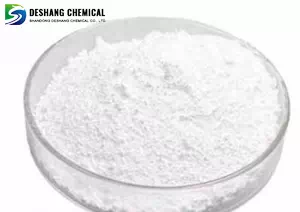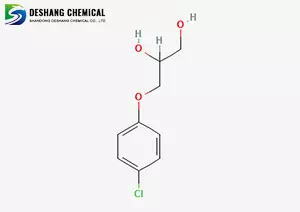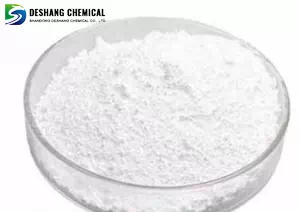All Categories



Chlorphenesin CAS 104-29-0, Chlorphenesin, CAS 104-29-0
The compound of CAS 104-29-0 is chlorophenylglycine. Its core functions are antifungal, antibacterial and immunosuppressive, and it is widely used in the preservation of pharmaceutical preparations and cosmetics. It is relatively safe, but inhalation or direct contact should be avoided.
CAS : 104-29-0
Formula : C9H11ClO3
Mol. wt. : 202.63
EINECS : 203-192-6
| CAS | 104-29-0 |
| Molecular formula | C9H11ClO3 |
| Molecular weight | 202.63 |
| EIENCS | 203-192-6 |
| Form | Solid |
| Melting point | 77-79°C |
| boling point | 290.96°C |
| Density | 1.2411 |
| Solubility | DMSO (Slightly), Ethanol (Slightly), Methanol (Slightly, Sonicated) |
| PKA | 13.44±0.20(Predicted) |
| Color | White to Off-White |
| Storage temp | Sealed in dry,Room Temperature |
The compound of CAS 104-29-0 is chlorophenylglycine. Its core functions are antifungal, antibacterial and immunosuppressive, and it is widely used in the preservation of pharmaceutical preparations and cosmetics. It is relatively safe, but inhalation or direct contact should be avoided.
Molecular formula: C₉H₁₁ClO₃
Molecular weight: 202.63 g/mol
Appearance: White to grayish-white crystalline powder.
Solubility: Slightly soluble in water, soluble in 65℃ warm water, glycerol or propylene glycol.
Melting point: 77-84°C.
Boiling point: 369.5°C (at normal pressure).
Flash point: 177.2°C.
LogP value: 1.07 (lipophilicity).
The field of medicine
Immunosuppression: It is used for antigen-related immunosuppression by inhibiting igE-mediated histamine release.
Antifungal/antibacterial: It has a strong inhibitory effect on fungi (such as Aspergillus Niger, Penicillium pinaeformis), yeasts (such as Candida albicans), and Gram-positive/negative bacteria, and is suitable for vaginal fungal and trichomonas infections, etc.
The field of cosmetics
Preservatives: Used in skin care products, shampoos, nail polish, soaps, etc., they inhibit the growth of microorganisms and do not release formaldehyde.
Safety: No skin irritation at the recommended dosage, compatible with preservatives such as potassium sorbate and sodium benzoate.
Hazard Identification: Xn (Hazardous Substance).
Risk terms: R20/21/22 (Harmful to inhalation, skin contact and ingestion).
Acute toxicity: Subcutaneous LD₅₀ = 911 mg/kg in mice.
Ecological impact: The conventional dosage has no significant harm to water bodies.
* Prompt reply and 24 hours online, professional team to provide best price and high quality product.
* Sample testing support.
* Every batch of products will be tested to ensureits quality.
*The packing also can be according the customers` requirment.
*Any inquiries will be replied within 24 hours.
*we provide Commerical Invoice, Packing List, Bill of loading, COA , Health certificate and Origin certificate. If your markets have any special requirements, let us know.